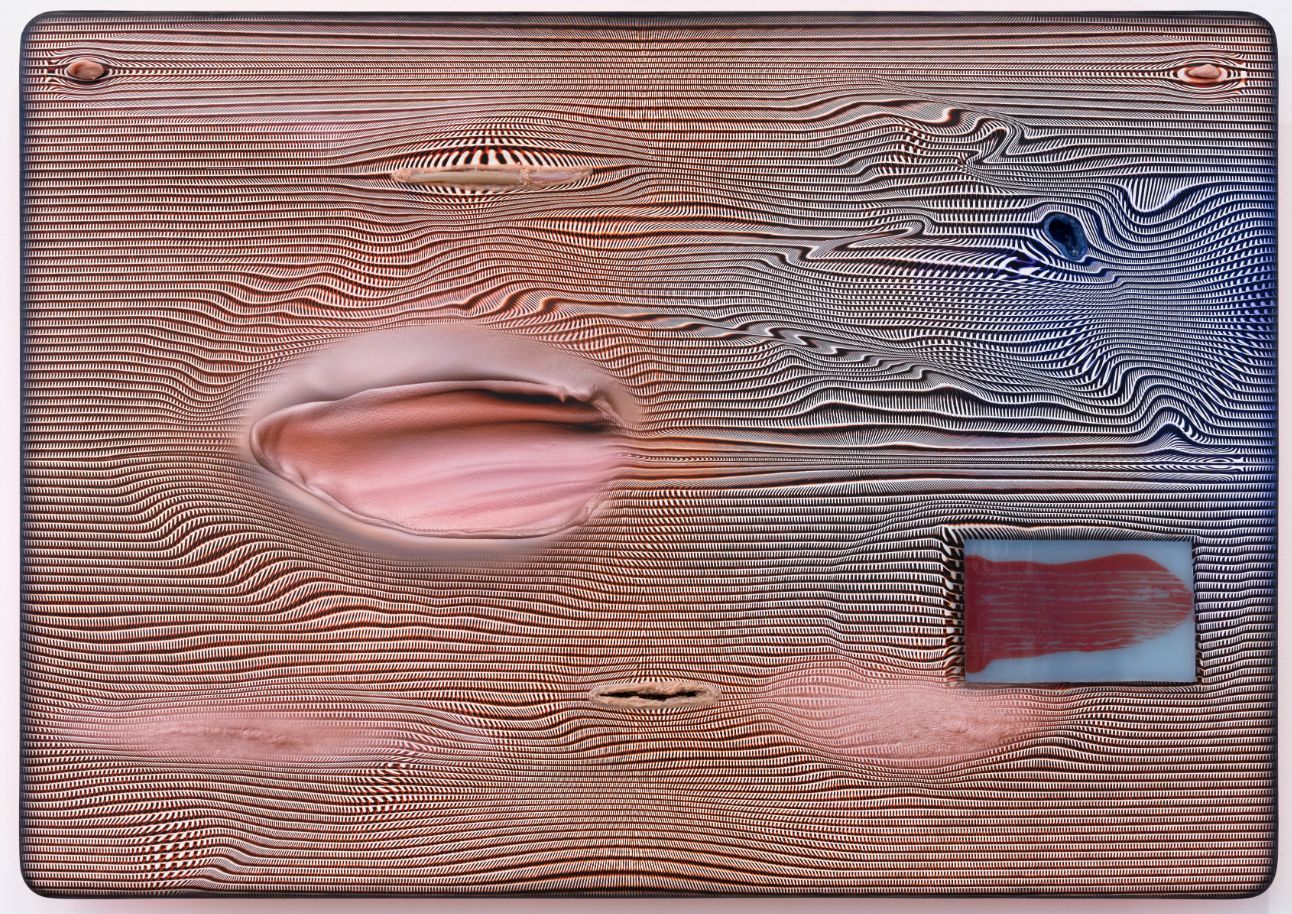Text by Irem Erkin and CLOT Magazine
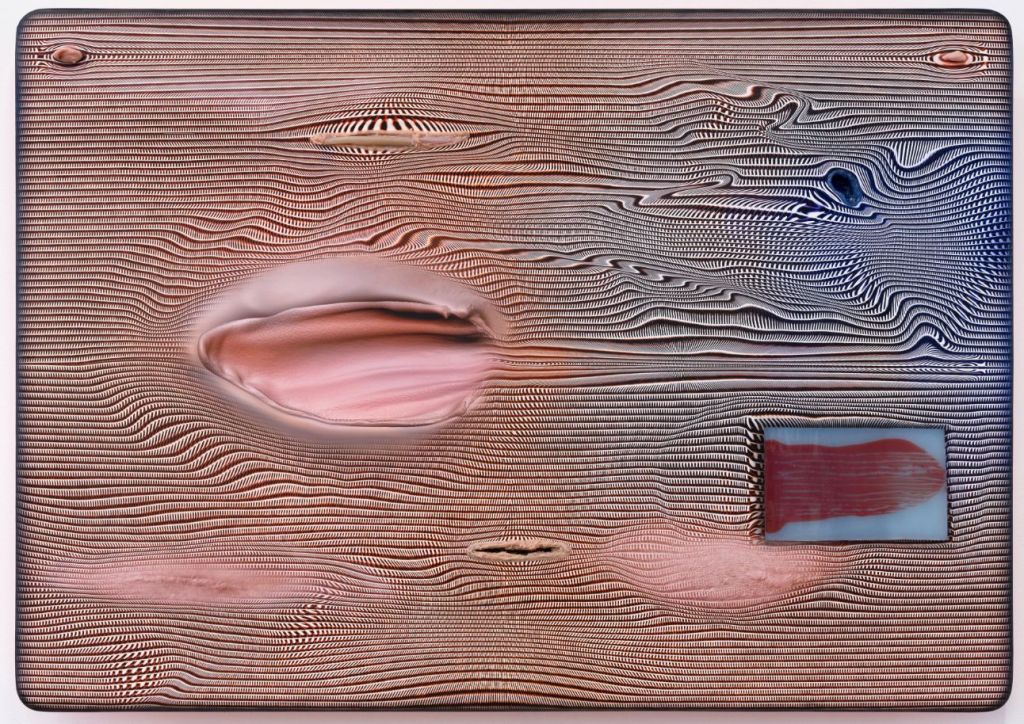
Finishing at the end of the month, The Painter’s New Tools exhibition at Nahmad Contemporary gallery is showcasing a set of artworks by artists who are pushing the boundaries of what painting can be. Curated by Eleanor Cayre and Dean Kissick, the exhibition aims to be a deeper reflection of the world that surrounds us and the new “ways of seeing” we’ve been pushed into by screens, which at the same time, are also profoundly influencing artists’ practices.
The impact of new digital technologies in the art world and in art-making is well established, discussed and represented. Its expression and use have been steadily increasing in the last decade and making their way into more classic, established art spheres. Yet, something that started many decades ago, mainly in underground, experimental and lesser known scenes (to cite an example, check the life and work of computing art pioneer Herbert H. Franke) is now present across many different levels of art making, showcasing and dealing.
Painting seemed to be the medium that remained more impassible or untouched by the advent of new technologies. But it wasn’t long until, in 2018, Christie’s auctioned Digital Objects by French collective OBVIOUS, the first AI-generated artwork inspired by old portrait paintings, provoking a considerable stir across the art world.
Lots have happened since then, and as technologies advance and refine and artists master their use, we are witnessing the birth of a new generation of creatives exchanging paint brushes for an entirely new set of technology-informed tools. New tools that allow them to manipulate paint -and painting without paint- by using software, CGI, code, AI, printers, tablets, phones, robotics and other image-making technologies.
Many of these works are made in conjunction with machines or even by machines. For centuries artists strove to imitate the effects of light with paint, and now they can draw with pure light on canvases lit from within, the curatorial team says. The exhibition includes a selection of 57 artworks by 31 renowned creators, some of them probably familiar to our audiences, such as Harm van den Dorpel, Wade Guyton, Jesse Kanda, and Anicka Yi.
When selecting artists for this exhibition, Eleanor Cayre shares that they were not only thinking about artists who are using materials other than paint to produce paintings but also about new kinds of beauty in a world where we are constantly inundated with images, information, and endless possibilities. Nevertheless, the idea of the painting occupies a privileged place in the hierarchy of contemporary art, and in this exhibition, we wonder about the future development of something as traditional as “oil on canvas” capital-A Art.
Many of the artists in the exhibition, she continues, have the boldness to declare their works “paintings,” despite the lack of paint in their work or the fact that they themselves are not performing the conventional gesture of painting, that is, painstakingly applying paint to a canvas stroke by stroke. These artists are breaking into the painting genre, many of them using an alternative process to create works that would not have been possible to create a decade earlier. The curators wanted to show artists representing their generation by using the tools available to them at this current moment in the world.
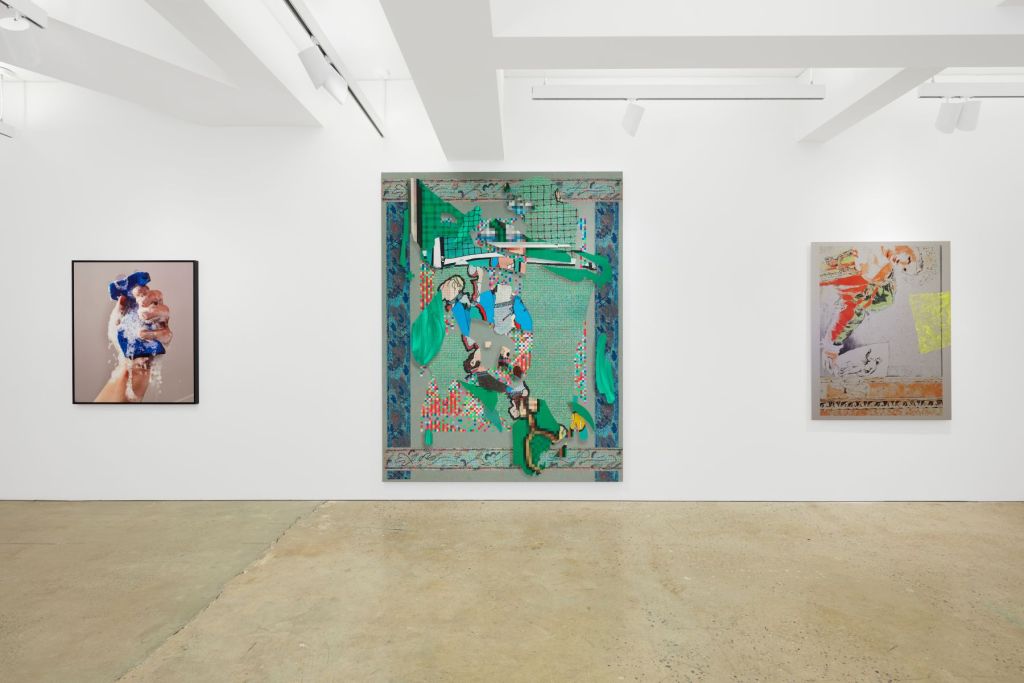
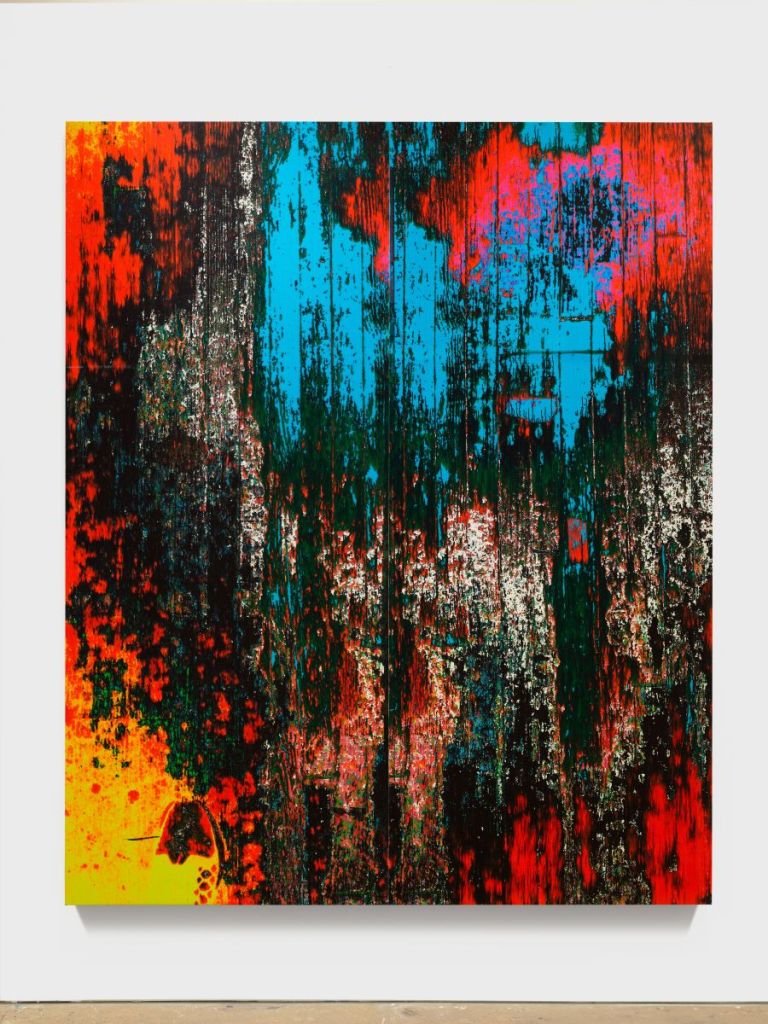
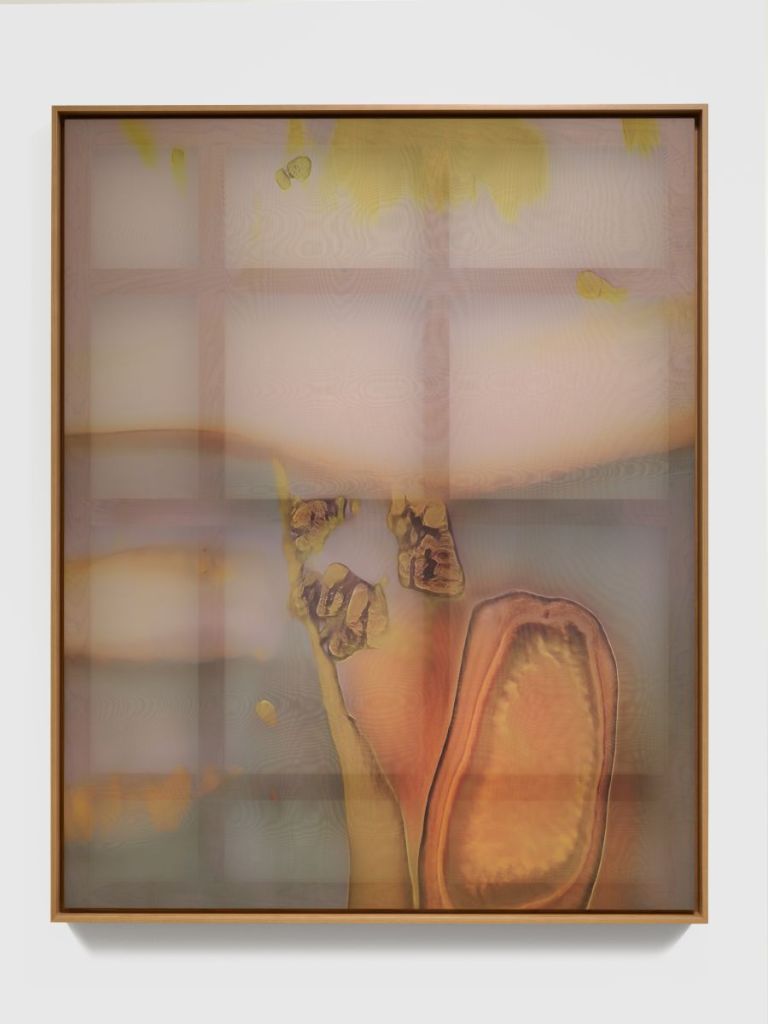
Right: Cosmopolitics, Anicka Yi (2022). © Courtesy of the artist and Gladstone Gallery
When asked how the curators feel about the new medium/new tools, whether they think these have overcome being a mere “tool” and blended into the process as new creative collaborators, or how they see the relationship between the painters and the technology, Eleanor argues that artists have been removing traces of their hand from their work for decades, that is nothing new. But as they begin to incorporate processes that automatically generate the work or make new kinds of work, that wouldn’t be possible without technological intervention. I think this is something to be celebrated and championed. It is a way for artists to open up new channels of thought and expression, reflecting the increasingly fast-paced and digital world we live in.
Another interesting aspect is that advanced technologies evolve rapidly, so besides the artist’s ongoing research and growth, they presumably have to dedicate time to keep up with the developments of their new collaborator. And with that, does technology accelerate the artist’s evolution, or is the artist who pushes the limits of technology while pursuing artistic perfection?
Eleanor thinks that we are living in a time when the relationship between the painter and the technology is that of master and tool (the painter being the master of the technology, which they use as a tool to get to the end result). The fundamental philosophical debate comes in when the tool surpasses the master, in which case, there is the question of “Who is the artist?” and “Is the process the work or is the end result of the said process the work?”.
She also believes that artists should use the most current tools available to them if they have access to them: Many of us spend hours on our computers every day, and the artworks produced today should reflect that. Artists today might spend hours honing their skills on a computer program to make artwork rather than mixing paints and stretching canvas. It is an artist’s responsibility to maintain a studio practice in whatever capacity they are able to and what works best for the work they aim to do. Some artists wish the technology they have mastered could be better, constantly improving old works with new software. Some build new systems to realize their artistic vision and achieve something otherwise impossible. Some exploit the limitations of the tools at their disposal (think Wade Guyton with the Epson printer). While technology provides a certain advantage to the artist who chooses to use it, the flip side of that convenience is that technology is also simultaneously in a constant battle with the artist, all the while widening the scope of what is included in the canon of contemporary art.
Painting is moving into new avant-garde territories, and a nascent scene is forming: Painting that explores how new aesthetics and experiences might be crafted. Given the abundance of paths opened up by modernism and contemporary art, combined with this century’s many new technologies, the possibilities available to an artist today are far more significant than ever before New modes of painting, new modes of beauty, the curators beautifully put it.
Looking into the future, with this exhibition, Eleanor concludes, they managed to bring together many different art communities. The artwork is nothing without the viewer, and everyone who came out to see the exhibition seemed to come with a desire to see one thing and left learning a whole lot about another thing, which I’m thrilled about. In planning this show, we were tempted to include innovative examples of contemporary sculpture at many points but knew we wanted to limit it to just wall-based works. We are ager to work on a new show of sculptures made by artists using advanced technologies and processes.

